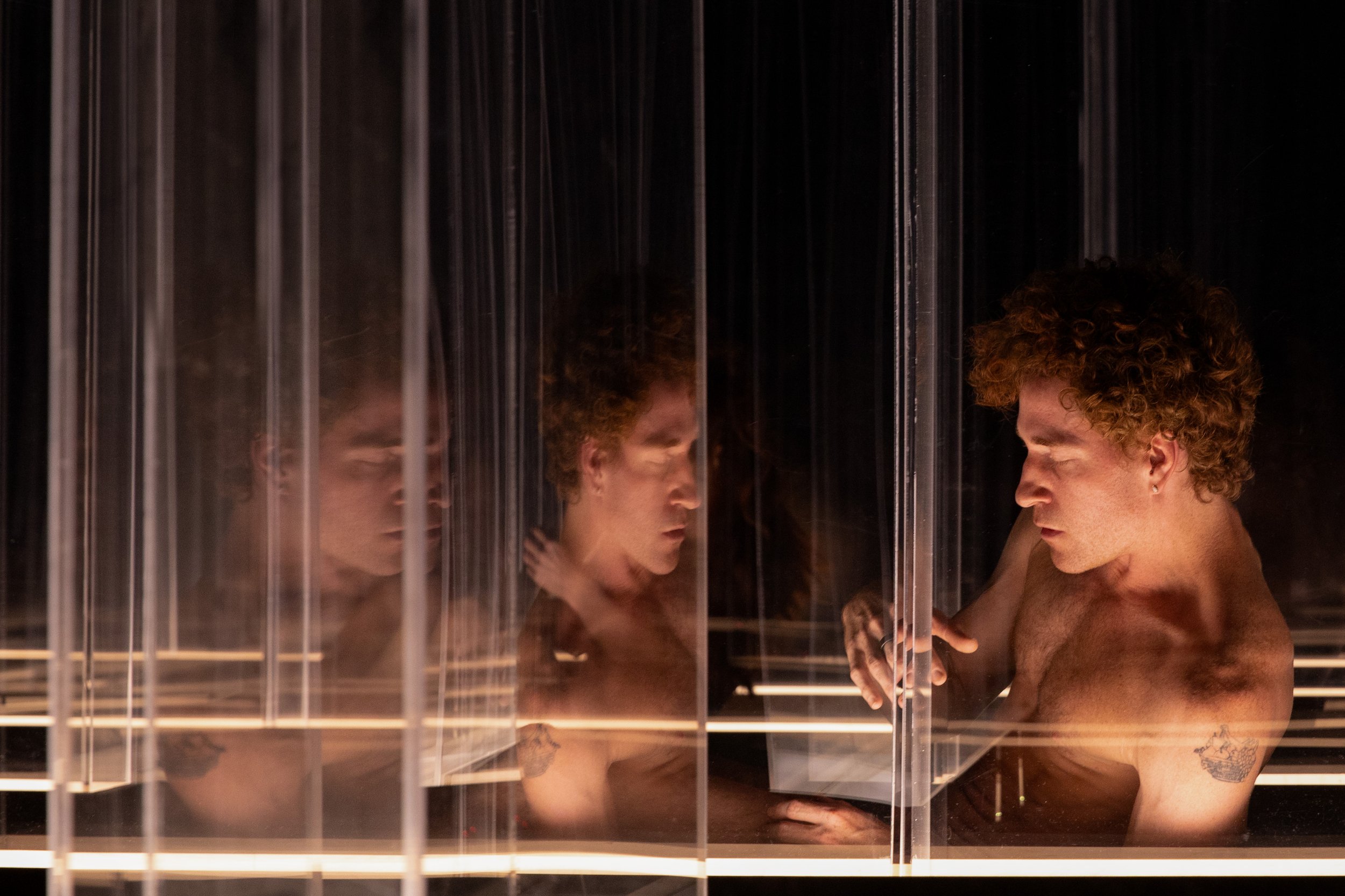Salamander | Maxine Doyle & Es Devlin
[Warning! Spoiler alert.. – This event is immersive in nature, and this review addresses those experiences.]
Salamander is an ambitious project in all aspects. Filling an entire warehouse at Northshore Hamilton, the dance-theatre experience explores broad topics such as climate change and evolution alongside intimate topics such as isolation and the individual human experience. Utilising highly skilled dancers, co-visionaries Maxine Doyle and Es Devlin have delivered a unique and enthralling large-scale production for this year’s Brisbane Festival.
Image credit: Justin Nicholas
Loosely split into two acts taking place on opposite sides of the same space, Salamander introduces the audience to an alien depiction of a dystopian future. Existing in a world devastated by pollution and flooding, the performers often interact with their environment in an amphibian-like way. This is appropriate as a large proportion of the performance area is inundated with shallow waters. When moving together, the dancers in Salamander feel like a unified organism, joined by the rhythm of a single heartbeat. This cohesion adds to the alien atmosphere of the show. However, incredibly human themes are also explored. In moments of solo movement, dancers often appear erratic, even violent, due to their profound isolation. I was impacted by the sombre beauty of the choreography. The connection between the performers is often shown as being influenced by temptation, vice, or even animalistic mating and hunting behaviour. More meaningful connection is rarer and more impactful when it does occur, as the characters of Salamander seek real intimacy and understanding even when facing the end of the world.
The performance takes place within and around the sculptural work of artist and stage designer Es Devlin. Choreography throughout the show highlights Devlin’s installation work and her influence is felt as the dancers seem to become part of a larger kinetic sculpture. The major set pieces of the show are a partially submerged glass labyrinth and an unusually long dining table. The second half of Salamander reveals the seemingly simple table is able to spin on a central axis, invoking the image of a clock face. Dancers take turns pushing and building up speed, often appearing laboured or in danger of being hit by the now unstoppable table. Performances take place simultaneously in, around, and on top of the moving set piece. This is where the physical skill of the dancers is truly shown as they often duck under or roll over the table, missing being hit so narrowly that some audience members in my showing audibly gasped. The movement of the table is a testament to the combined momentum that can be achieved when people come together. The dining table is also used to explore familial themes. Gathered together at the end of the world, the characters in Salamander play out the range of experiences a table gathering may facilitate. Whether breaking bread, experiencing childlike joy or fighting amongst themselves, Salamander’s characters invoke the totality of the human experience. Sitting with loved ones is a near-universal experience that grounds the narrative with a sense of relatability. In spite of its ambitious scope, Salamander is able to unify its set and dancers to deliver a clear narrative.
Water is a central force in Salamander. Its role ebbs and flows in the work presented at different times as mysterious, dangerous, beautiful, and cathartic. Choreography is based around water and the way in which characters interact with it or avoid it altogether. However, it is made clear that nature is not the source of conflict in this narrative. Pollution and human actions are the antagonists of Salamander; it is made clear that even if the last remnants of humanity fade away, nature will still remain. ‘Salamanders’, the production's namesake group of amphibians, are not native to Australia. Nevertheless, Salamander premiering in a warehouse along the Brisbane River feels appropriate as the audience is asked to consider our own relationship and responsibility to our environment.
Image credit: Justin Nicholas
A world facing a climate disaster, while professionally executed in this production, is not a novel concept to younger Australians such as myself. What Salamander left me considering instead was the impact that living in a near-hopeless world can have on our interpersonal relationships. I felt empathetic to the character's struggle to remain positive and connected despite their polluted surroundings. Their journey to understand each other and the world around them is enacted through carefully considered dance and choreography. By focusing on not only ecological themes but also on social dynamics, the direction of Salamander was able to provoke insight into my own relationships.
While on the pricier side for Brisbane Festival, Salamander is a welcome addition to this year's lineup. With expert production, direction, and choreography, it is clear to see why Salamander is a standout show. It's a performance where everything is big, from the themes addressed to the space and stage design. An incredible amount of work went into creating a cohesive experience that includes some of the best dance I have ever experienced.

